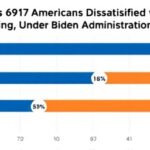The United States is grappling with its longest Government shutdown in history, now tied at 34 days, as a partisan standoff in Congress shows no signs of resolution. Federal workers remain furloughed or working without pay, while essential services strain under the weight of unfunded operations. In Washington, senators have returned from a holiday recess only to face the same entrenched disagreements over border security and spending priorities, leaving millions of Americans in limbo.
Senators Back in Washington Face Familiar Impasse
As the Senate reconvened in Washington on Monday, the atmosphere was thick with frustration but devoid of breakthroughs. Senate Majority Leader Mitch McConnell (R-KY) called the session to order, urging bipartisan compromise on a bill to restore federal funding. However, Democratic leaders, including Chuck Schumer (D-NY), reiterated their opposition to any measure that includes funding for a border wall—a key demand from President Donald Trump.
“We’ve seen this movie before,” Schumer said in a floor speech. “The American people deserve better than this endless loop of shutdown threats and political posturing.” Republicans countered by blaming Democrats for blocking progress, with Sen. Lindsey Graham (R-SC) tweeting, “Time to end the Democrat obstruction and secure our borders.”
The shutdown, triggered on December 22, 2018, stems from a dispute over a $5.7 billion allocation for border wall construction within a larger $1.3 trillion spending package. With no agreement in sight, the partial closure affects nine of the 15 Cabinet-level departments, including Homeland Security, Justice, and Agriculture. This marks the third shutdown during Trump’s presidency and the longest since the 1995-1996 impasse over budget cuts.
Behind the scenes, negotiations have been rocky. House Speaker Nancy Pelosi (D-CA) has hosted multiple talks, but sources close to the discussions say trust has eroded. “Every meeting ends with the same sticking points,” one anonymous congressional aide told reporters. The return of lawmakers to Washington was hoped to inject momentum, but early indications suggest another week of stalemate.
Airport Disruptions Escalate Nationwide
Travelers across the country are feeling the pinch of the Government shutdown through mounting chaos at airports. The Transportation Security Administration (TSA), operating on borrowed funds, reported over 10,000 call-outs due to illness and stress among its 51,000 employees—many working without pay. This has led to widespread delays and long security lines, particularly at major hubs like Atlanta’s Hartsfield-Jackson and Los Angeles International.
On Tuesday, the FAA noted a 20% increase in flight delays attributed to staffing shortages at air traffic control facilities. “We’re doing everything we can, but the strain is real,” said TSA spokesperson Mike McCarthy. Passengers shared harrowing stories on social media: one family from Chicago waited three hours at O’Hare, missing a connecting flight and stranding them overnight.
The ripple effects extend beyond domestic travel. International visitors are deterred by reports of inefficiencies, potentially harming tourism revenue. The U.S. Travel Association estimates that prolonged disruptions could cost the industry $1.5 billion in the first month alone. In a stark example, New York’s John F. Kennedy Airport saw a protest by unpaid TSA workers, highlighting the human cost of the federal funding freeze.
Airlines have stepped in with contingency plans, offering waivers for rebookings, but the uncertainty persists. Experts warn that if the shutdown surpasses 35 days, mandatory furloughs for non-essential FAA staff could ground flights entirely, echoing the 2013 shutdown’s near-miss scenarios.
Food Distribution Sites Overwhelmed by Surging Demand
While airports bear the brunt of visible disruptions, the Government shutdown is quietly exacerbating food insecurity for vulnerable populations. The U.S. Department of Agriculture (USDA), partially shuttered, has halted inspections and subsidies, leading to long lines at food banks and distribution centers. In cities like Detroit and Miami, wait times have doubled, with some sites reporting queues stretching for blocks.
The Supplemental Nutrition Assistance Program (SNAP), commonly known as food stamps, faces a precarious future. Although benefits for February were distributed before the holiday break, the program’s 42 million recipients are anxious about March payments. “Without federal funding, we’re looking at potential delays that could affect one in seven Americans,” warned Feeding America CEO Claire Babineaux-Fontenot.
Statistics paint a grim picture: The shutdown has furloughed 13,000 USDA employees, stalling WIC (Women, Infants, and Children) program operations that serve 6.3 million low-income families. In rural areas, where food deserts are common, the impact is amplified. A report from the Center on Budget and Policy Priorities estimates that every day of closure delays $100 million in nutrition aid.
Nonprofits are scrambling to fill the gap. The Greater Chicago Food Depository, for instance, distributed an extra 500,000 meals last week, relying on private donations. “We’re seeing families who never needed help before,” said executive director Kate Maehr. Personal accounts underscore the crisis: A single mother in Phoenix described skipping meals to feed her kids, her EBT card’s uncertain future weighing heavily.
Economic Fallout Hits Workers and Businesses Hard
The prolonged government shutdown is inflicting severe wounds on the U.S. economy, with estimates now topping $11 billion in lost productivity. Federal workers—800,000 strong—are either furloughed or toiling without back pay guarantees, forcing many to dip into savings or seek side gigs. In Washington, D.C., local businesses report a 30% drop in revenue from absent government employees.
The Congressional Budget Office projects that each week of shutdown shaves 0.1% off GDP growth. Small businesses dependent on federal contracts, such as those in defense and research, are hit hardest. Boeing and Lockheed Martin have halted some projects, idling thousands indirectly. “This isn’t just a Washington problem; it’s strangling innovation nationwide,” said National Association of Manufacturers President Jay Timmons.
Unemployment claims linked to the shutdown have surged, with 10,000 federal contractors filing in the past month. Consumer confidence is waning, as evidenced by a dip in retail sales during the holiday season. The stock market, while resilient, saw a 2% Dow Jones drop on news of the Senate’s fruitless return.
Broader economic ripples include delayed IRS refunds, which could inject $200 billion into the economy if processed on time. Economists like Mark Zandi of Moody’s Analytics warn of a potential recession trigger if the impasse persists. “The uncertainty alone is corrosive,” Zandi noted in an interview. Affected workers share stories of financial desperation: A Coast Guard member in Virginia spoke of using credit cards for groceries, while a Smithsonian curator worried about museum closures impacting cultural tourism.
Internationally, the shutdown undermines U.S. credibility. Trade partners delay deals, citing instability, and global markets watch warily as the dollar fluctuates.
Glimmers of Hope and Looming Deadlines Ahead
As the shutdown ties the 1995-1996 record, faint glimmers of progress emerge amid the gloom. Bipartisan talks in the House aim to decouple border funding from broader appropriations, potentially averting disaster by week’s end. President Trump, in a White House address, softened his rhetoric slightly, saying, “I’m open to compromises that secure our nation.”
Yet deadlines loom large. Paychecks for 2 million federal workers are due February 15, and without a deal, back pay promises may ring hollow. The Treasury Department warns of cash flow issues by mid-March if unresolved. Advocacy groups like the Partnership for Public Service push for emergency legislation to ensure retroactive pay, gaining traction in both chambers.
Looking forward, experts predict a resolution could come via a short-term funding bill, buying time for comprehensive immigration reform. However, with midterm elections on the horizon, political incentives may prolong the drama. “Congress must prioritize people over politics,” urged Senate Minority Whip Dick Durbin (D-IL). For now, Americans brace for more uncertainty, as the fate of federal funding hangs in the balance in Washington.
The shutdown’s legacy could reshape budget battles for years, emphasizing the need for fiscal reforms to prevent future crises. Stakeholders from unions to CEOs call for structural changes, like automatic continuing resolutions, to safeguard the economy from congressional gridlock.









